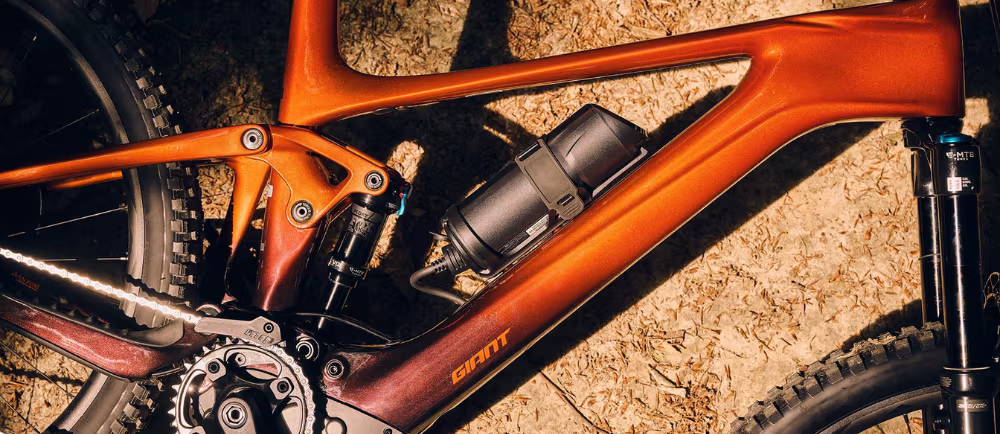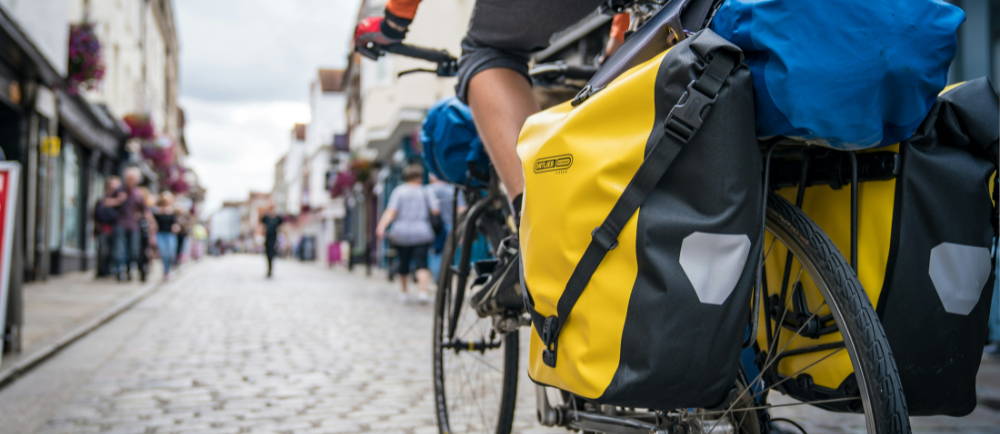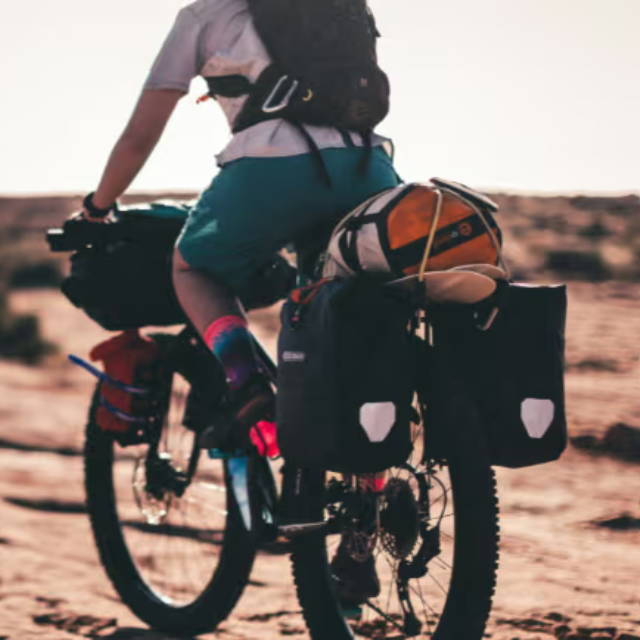In nearly all states, riders do not need a license to operate an electric bike. However, riders of Class 3 e-Bikes in New Jersey need a license, and e-Bike users in Hawaii will need to pay a $30 registration fee.
How to Plan an E-Bike Camping Trip: Essential Tips and Gear
Written by: Rémy Rossi | June 20, 2025 | Time to read 6 min
E-Bike adventures open up wild new terrain without burning you out on the uphill. Here’s what you need to know.

More about the Author: Remy Rossi
Rémy Rossi is a bike writer, mechanic, and educator who got his start in community-based bike shops and co-ops. With a decade in the industry, he still wrenches on bikes when he can and plays bike polo on a fixie.

👋 Welcome to Upway!
Table of Contents
There are so many types of e-Bike adventures
You can also combine e-Bike trips with other types of camping, including van life, car camping, or driving an RV. Plenty of campers bring a bike or an electric bike with them so they can explore on two wheels around the area without having to drive a larger vehicle. The tips below are most relevant to bikepacking on an e-Bike, but apply to other forms of camping trips, too.
Consider your e-Bike’s range

Calculate your bike’s expected range and plan accordingly. Remember that your ride will be heavier than normal since it’s loaded up with camping gear, so the range will be reduced. Riding a long-range electric bike can help you travel more distance, too.
Plan days that are within your e-Bike’s range, or plan strategic charging stops during lunch breaks or rest stops. You may also want to use a range extender like one from the Giant EnergyPak battery system to add range.
Choose your route wisely

First, check that the trail and route are appropriate for your electric bike. Electric mountain bikes can handle the most rugged terrain, while road e-Bikes need to stick to pavement, but gravel e-Bikes can split the difference. Utilize navigation and route planning cycling apps like Ride with GPS or Komoot for recommended rides and information on the riding surface and gradient.
Confirm that your electric bike is actually permitted on the trails you’re planning to ride on. Some trails prohibit faster Class 3 e-Bikes or Class 2 bikes with throttles, or may even ban all electric bikes. Typically, Class 1 e-Bikes with a top speed are allowed in most areas, so you shouldn’t have a problem, especially if you practice proper trail etiquette.
Campsites or lodging with e-Bike charging options
Some resourceful riders get along the way and take every opportunity to top off their e-Bike’s battery, such as recharging at lunch stops, gas stations, or restaurants. Sometimes, rest stop or campsite bathrooms are the only places with electrical outlets.
Try to bring a fast charger with you, the fastest one your battery supports, so you can fuel up as quickly as possible. I have seen solar charging solutions, but the technology is not as reliable or powerful as traditional chargers— it’s sufficient for charging smaller electronics like a phone or power bank, though.
Use lower levels of assist

🤝 Looking for a sweet deal?
Get an even better discount when you sell your old electric bike!
Click here for a price estimation!
Keep things as lightweight as possible
What to pack on an e-Bike camping trip

- Essential bike tools: You’ll need a flat repair kit, a portable pump, and a multitool at the very least. It’s a good idea to carry a quick link and chain tool in the rare case that the chain breaks.
- Shelter: If you’re sleeping under the stars, you’ll need the appropriate tent, sleeping pad, and sleeping bag. In warmer weather, some cyclists opt for a hammock.
- Food and hydration: Depending on the route, you may need to pack all your food and water or refuel along the way. Things like a camping stove, cooking pot, energy bars, electrolyte drinks, and nutritious food will keep you going. And lots of water!
- Appropriate clothing: Dress for success based on the weather. That means warm enough layers or cool, sweat-wicking apparel to ensure you’re comfortable during the ride. Prepare for rain and slather on that sunscreen.
Frequently Asked Questions
Do you need a license for an electric bike?
Are electric bikes safe?
Yes, e-Bikes are safe to ride, and they continue to get even safer due to better battery technology and safety certifications. Riders should keep in mind, however, the additional weight and higher speeds of electric bikes during use.
Do I need to check my e-Bike every time I ride?
It’s a good idea to check the tire pressure before every ride to see if the tires need to be inflated. Other maintenance tasks, like looking over the gears and brakes, are recommended after every several rides. Bigger projects like suspension can happen as needed.
Key Takeaways
- Battery range is everything: Plan your route and charge stops strategically to avoid getting stranded.
- Pack smart and light: Even with pedal assist, minimalism when it comes to gear means more fun and longer range.
- Know your route and rules: Not all trails allow e-Bikes, and the right type of e-Bike matters for terrain and legality.


